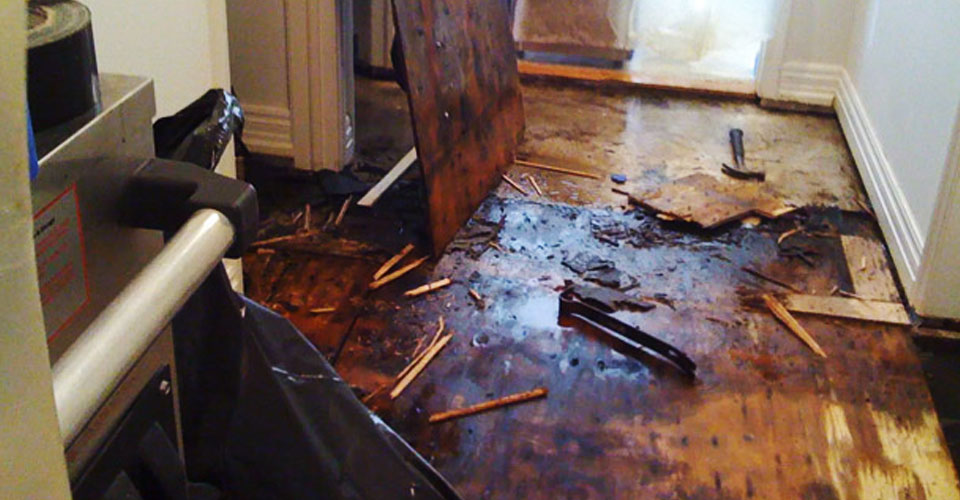Do's & Don'ts of Water Damages.
Do's & Don'ts of Water Damages.
Blog Article
This great article listed below on the subject of 5 Home Safety Tips To Reduce The Risk Of Fire And Water Damage is exceptionally entertaining. Read it for your own benefit and figure out what you think about it.

Though water offers life, water breach on parts where it's not meant to be can lead to damage. It can peel away surface areas and erode the foundation if the water saturates right into your framework. Mold and mildew and also mold also prosper in a moist atmosphere, which can be unsafe for your health. Homes with water damages smell old and also stuffy.
Water can come from many resources such as tropical storms, floodings, burst pipelines, leakages, and sewage system problems. In case you experience water damage, it would certainly be good to recognize some security precautions. Below are a few standards on how to manage water damage.
Do Prioritize Home Insurance Policy Protection
Water damages from flood as a result of heavy winds is seasonal. You can also experience an unexpected flooding when a damaged pipe all of a sudden ruptures right into your residence. It would certainly be best to have home insurance that covers both acts of God such as natural disasters, as well as emergency situations like busted plumbing.
Do Not Forget to Turn Off Energies
In case of a calamity, specifically if you stay in a flood-prone location, it would certainly be a good idea to shut off the primary electrical circuit. This cuts off power to your entire residence, stopping electrical shocks when water is available in as it is a conductor. Additionally, don't forget to switch off the primary water line valve. When floodwaters are high, furniture will certainly move around and also trigger damage. Having the primary shutoff shut down stops further damages.
Do Keep Proactive as well as Heed Climate Informs
Listen to evacuation warnings if you live near a river, creek, or lake . Doing so minimizes prospective home damages.
Don't Disregard the Roofing System
You can prevent rain damage if there are no openings as well as leaks in your roofing system. This will protect against water from moving down your walls and saturating your ceiling.
Do Focus On Small Leakages
A burst pipeline does not happen overnight. Normally, there are red flags that suggest you have actually compromised pipelines in your home. You may see bubbling paint, peeling off wallpaper, water streaks, water spots, or dripping noises behind the walls. At some point, this pipe will certainly break. Ideally, you must not wait for things to intensify. Have your plumbing fixed before it leads to substantial damage.
Do Not Panic in Case of a Burst Pipe
When it comes to water damages, timing is essential. Therefore, if a pipe bursts in your residence, instantly closed off your primary water shutoff to reduce off the source. Call a credible water damages remediation specialist for support.
Water offers life, water invasion on components where it's not intended to be can result in damages. Residences with water damage scent musty and also old.
Water damages from flooding dues to heavy winds is seasonal. You might see gurgling paint, peeling off wallpaper, water streaks, water stains, or trickling audios behind the wall surfaces. When it comes to water damages, timing is vital.
Some Do's & Don't When Dealing with a Water Damage
DO:
Make sure the water source has been eliminated. Contact a plumber if needed. Turn off circuit breakers supplying electricity to wet areas and unplug any electronics that are on wet carpet or surfaces Remove small furniture items Remove as much excess water as possible by mopping or blotting; Use WHITE towels to blot wet carpeting Wipe water from wooden furniture after removing anything on it Remove and prop up wet upholstery cushions for even drying (check for any bleeding) Pin up curtains or furniture skirts if needed Place aluminum foil, saucers or wood blocks between furniture legs and wet carpet Turn on air conditioning for maximum drying in winter and open windows in the summer Open any drawers and cabinets affected for complete drying but do not force them open Remove any valuable art objects or paintings to a safe, dry place Open any suitcases or luggage that may have been affected to dry, preferably in sunlight Hang any fur or leather goods to dry at room temperature Punch small holes in sagging ceilings to relieve trapped water (don't forget to place pans beneath!); however, if the ceiling is sagging extremely low, stay out of the room and we'll take care of it DO NOT:
Leave wet fabrics in place; dry them as soon as possible Leave books, magazines or any other colored items on wet carpets or floor Use your household vacuum to remove water Use TV's or other electronics/appliances while standing on wet carpets or floors; especially not on wet concrete floors Turn on ceiling fixtures if the ceiling is wet Turn your heat up, unless instructed otherwise

I was introduced to that editorial about Preventing Fires and Water Damage In Your Home through an associate on another web address. Sharing is good. You never know, you may just be helping someone out. I am grateful for your time. Please visit our blog back soon.
Report this page